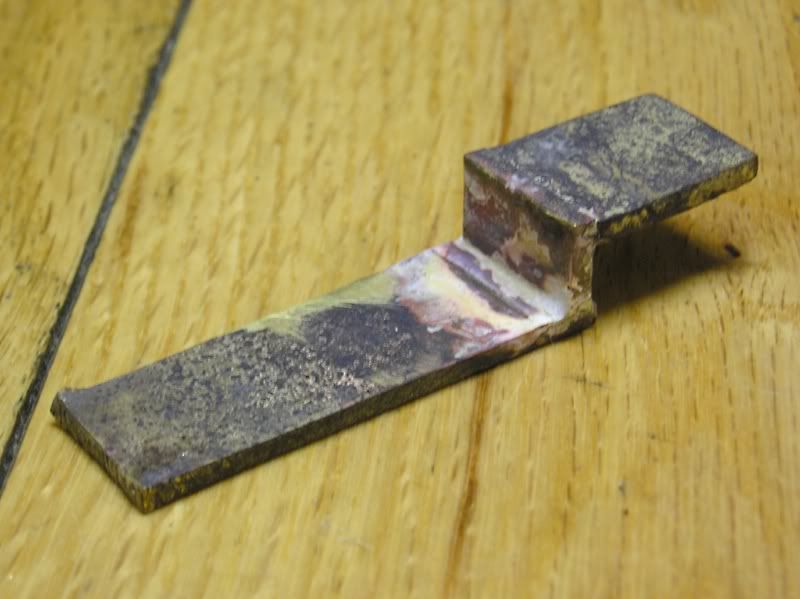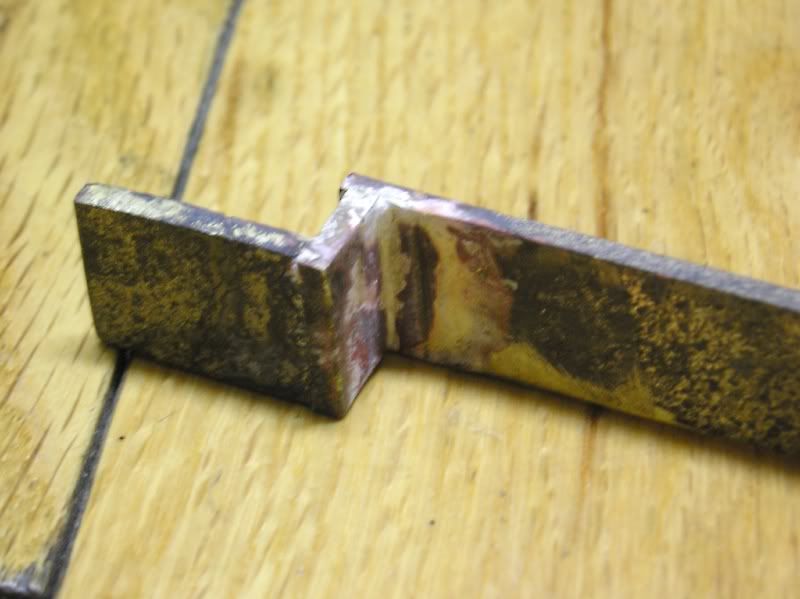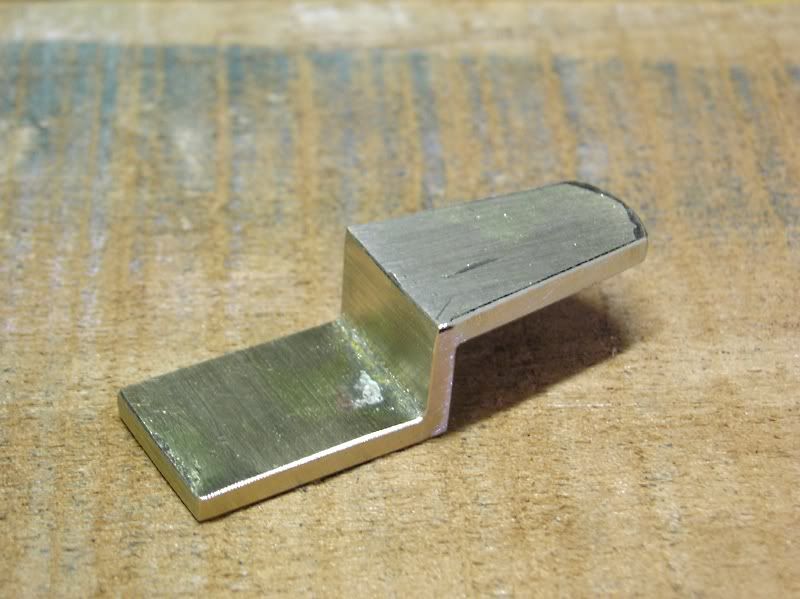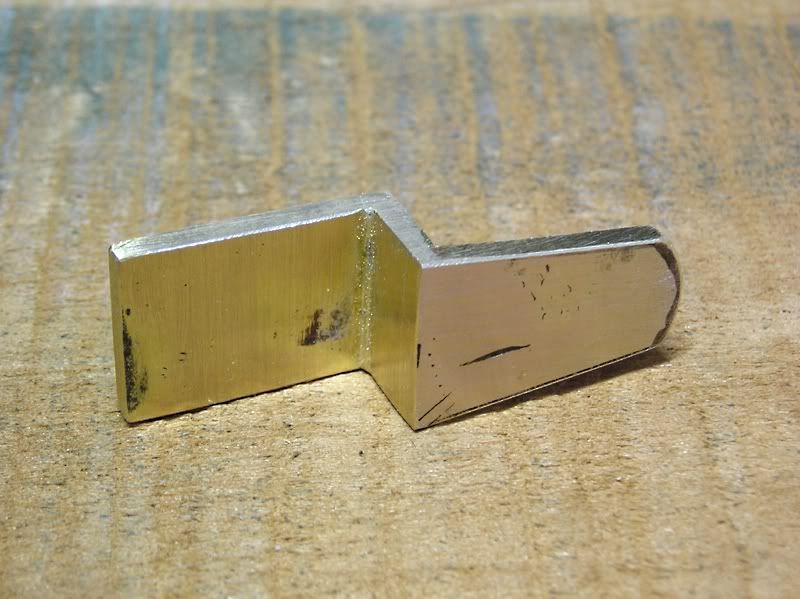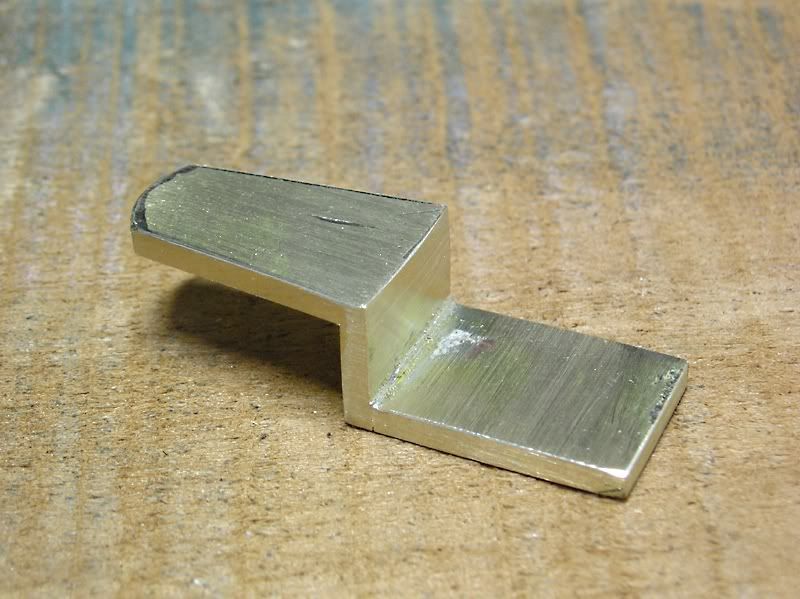Replacements are commercially available, and while they can look okay for certain clocks, the specific design needed for this particular clock means that it needed a custom stand. I prefer to make my own parts whenever possible, because I find that they look a lot nicer than factory made replacements.
Here's a typical mass produced replacement bell stand:

The first step in creating the bell stand is to find a suitable piece of steel, and cutting the blank. I use regular 3/4" x 1/8" steel bar stock from the hardware store. This is fairly mild steel, and it is easy to work with. The blank is cut using a hack saw. This short video shows how I cut the blank.
The rough-cut blank is then further shaped on a bench grinder, or alternatively, with coarse files.





The shape of the bell stand continues to be refined with smoothing files, and then eventually with sandpapers.




To round the stem portion, I begin by coarsely filing the corners, then filing those secondary peaks.




Once the bulk of the shaping has been done with the files, I switch to cloth-backed sanding papers, and I use this technique to round and polish the surface:
With 90% of the shaping and polishing done, I turn to the fitting of the bell stand to the movement. Normally a bell stand has a pointed teardrop shape that sits flat over the backplate, but this one has the style where the end of the tip turns into a locating hole in the plate. To form this hole, the blank is heated, and bent over an anvil.



The bulk of the excess metal is carefully filed away until the profile works with the plate holes. The screw hole will be cut last.

For the top of the stand, where the bell must sit, I use just a cross-shaped design that I came up with. This is a simple design, and it has worked well on the last bells stand I made. Not shown is the threading of the top. It is simply filed roughly into a cylinder, and threaded. A square brass nut is then cut, sanded, and tapped to match.





Here you can see the bell stand fitted to the clock plate.

You can also see the bell hammer, the bell stop piece (attached to the pillar), the hammer cock and a bit of the lifting piece. The hammer spring and spring pin had not yet been fitted.






